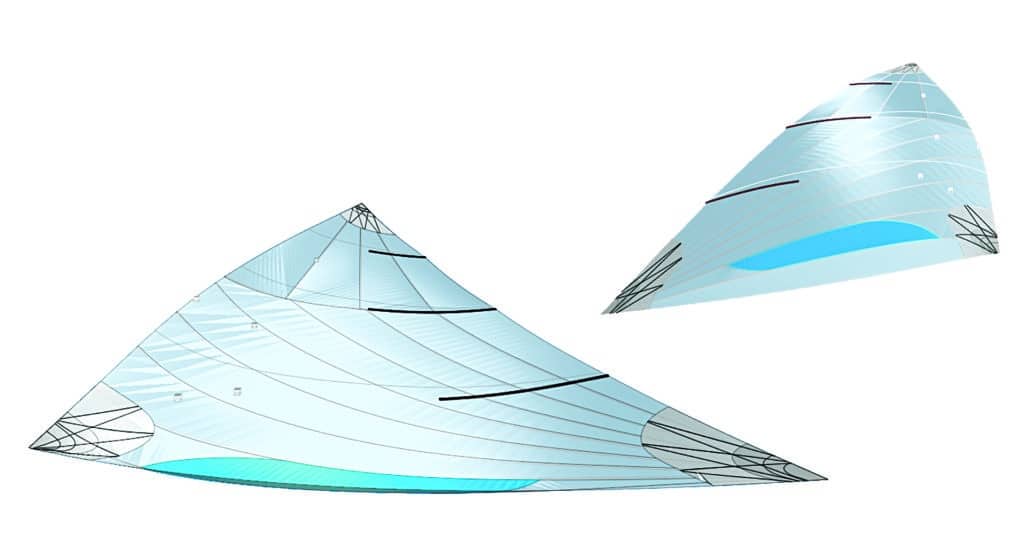
At the 2007 Laser Masters Worlds in Roses, Spain, International Laser Class president Tracy Usher started discussions about creating a new sail that would last longer than the existing sail, designed by Hans Fogh more than 40 years earlier. The new sail, designated the “Mark II,” was not designed to be faster than the existing sail, but to offer similar performance, longer life and a better look. But how does the most popular class in the world design a new sail without making the old one obsolete? In November 2008, Laser Performance and Performance Sailcraft Japan went to Mike Lennon, formerly of Hyde Sails, with this very question.
Initially, Lennon considered a Mylar laminate, but when Mylar frequently flaps or luffs, it tends to shrink, harden and split. He considered full battens to stop the flapping, but knew the boat would become less maneuverable that way.
“In the end, we went with soft Dacron, but slightly heavier, and a radial design,” says Lennon. He copied the shape of the original sail and then reinterpreted it as a radial cut, experimenting with 15 different radial designs. Ian MacDiarmid, of MacDiarmid Sails in Sydney, Australia, also designed a prototype, and in Weymouth, England, in 2009, Olympic champions Paul Goodison and Nick Thompson put the new sails to the test. “In comparison to an experiment in the lab, there are a lot of variables you can’t control [in a sail test], so you have to go with what your brain tells you, as opposed to a science experiment, where you can remove subjectivity from the analysis,” says Usher.
At the conclusion of the test, Lennon’s sail design went forward with some features from MacDiarmid’s design, including batten pockets, a luff sock that uses extra cloth where the upper mast meets the lower mast to eliminate the ugly wrinkle, and a new window that is five times larger. Lennon also refined finish details, reinforcing the cunningham grommet.
The sail is now available for purchase, and North American Laser Class Association president Andy Roy is very pleased with its smoothness. “I’ve been racing Lasers a long time, since 1974,” he says. “[Before the Mark II] my whole motto sailing upwind was don’t look up; it will just discourage you, it’s so ugly.”
While the performance of the Mark II is similar to that of the previous sail, it’s not identical. Clay Johnson, once an Olympic Laser campaigner, says the new sail is “a touch higher and faster in breeze.” He adds, “I think the new sail will in fact make the old one obsolete. The new one is better.” “It’s impossible to design a radial sail and a cross-cut sail and have them be the same in all conditions,” says Dan Neri, a Laser Master and chief operating officer of North Sails. He is enthusiastic about the new sail. “It has a much nicer twist profile. When you supervang upwind, you are pulling against the strongest part of the cloth.”
That’s one of the reasons everyone agrees the new sail will last significantly longer. A sail lasts for donkey’s years as an object, but as a performance product, Lennon says, some top Olympic sailors would say the previous sail was fast for just one regatta. He believes that Olympic contenders will get double the life out of the new sail, and club-level sailors will get an entire season and not notice a difference in performance. Johnson agrees with that assessment. He saw a Mark II sail on the water that had “75 days of practice and still looked good.”
Usher even attempted to “kill” a new sail by practicing with it frequently in San Francisco Bay’s City Front, where the breeze is sporty. Yet after 160 hours of hard use, the Mark II didn’t show any signs of deterioration.









